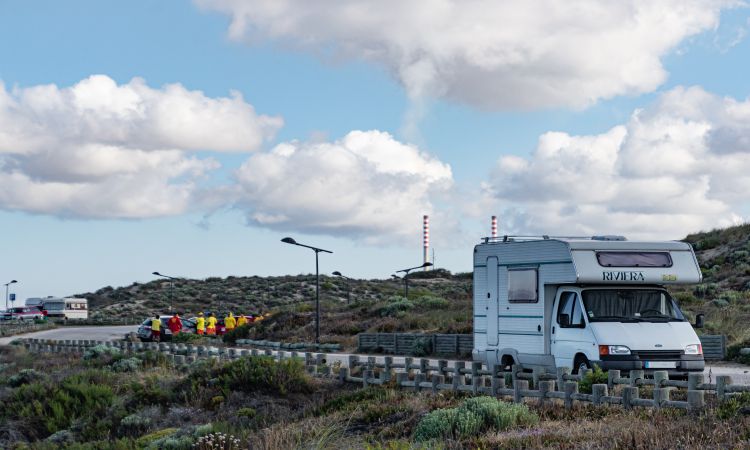 If you’re an avid RV owner, you know that your RV is your home away from home. You also know that as soon as the cold and flu season hits, everyone flees to their cabins or their RVs. The thing is, not all of those RVs are equipped to handle the harsh winter conditions, which is why so many RV owners decide to stay put for the winter. Yet staying put for the winter isn’t that difficult if you have a little bit of foresight and preparation beforehand. To help you get through the winter safely and efficiently this year, we’ve put together a helpful guide on How to Winterize Your RV for the colder weather that’s just ahead.
If you’re an avid RV owner, you know that your RV is your home away from home. You also know that as soon as the cold and flu season hits, everyone flees to their cabins or their RVs. The thing is, not all of those RVs are equipped to handle the harsh winter conditions, which is why so many RV owners decide to stay put for the winter. Yet staying put for the winter isn’t that difficult if you have a little bit of foresight and preparation beforehand. To help you get through the winter safely and efficiently this year, we’ve put together a helpful guide on How to Winterize Your RV for the colder weather that’s just ahead.
Decide Where You’ll Store Your RV
Before you can do anything else, you’ll have to decide where you’ll store your RV for the winter. As you probably know, most RV parks don’t allow you to park there year-round. The best option is to find a good place to store it that’s not too expensive and is out of the way of people and activity. You’ll want to find a place that has plenty of space. You also don’t want to keep it too close to other RVs, as those RVs can create a lot of condensation and moisture, which is bad for your RV.
Tires, Batteries & Shifting
When you’re preparing your RV for winter, you’ll want to make sure that your tires are in good condition. You don’t have to replace them if they have plenty of miles left in them, but you do want to make sure they have plenty of air in them. If your tires are underinflated in the winter, they can become brittle, overheat, and blow out more easily. That’s why you’ll want to make sure that you’re properly inflating your tires.
Once you’ve got your tires taken care of, you’ll want to also ensure that you’re storing your batteries properly. You don’t want to completely drain your batteries, but you also don’t want to leave them fully charged. Batteries that are left fully charged will have a shorter lifespan, so you’ll want to make sure that you’re storing your batteries appropriately.
Seal Your RV from the Elements
As you’re preparing your RV for the winter, you’ll want to seal off all of the windows, doors, and venting systems. You don’t want the cold air to get in, but you also don’t want the warm air from inside the RV to escape. For the windows, you’ll want to find an appropriate seal. Some RVs come with these built-in, but if yours doesn’t, you’ll need to purchase one. You can find them at any hardware store. To seal off the doors, you’ll want to find a weather stripping kit and carefully apply it to the edges of your doors. This will help keep the cold out and the heat in.
Check Your Venting System
If you have a forced air system in your RV, you’ll have vents through the inside of the RV where warm air is pumped through. You’ll want to check these out before the winter hits. To do this, you’ll start by turning on your furnace. As the warm air begins to be pumped out, listen closely. The warm air shouldn’t be coming out of the vents. You may notice that the air is coming out of the wrong vent or that the air is being pushed out much harder than it should be. If you notice either of these problems, shut off the furnace and make sure that the vents are cleaned out.
Add Stabilizer & Fresh Gas
You’ll want to make sure that you’re adding stabilizer to your fuel tank before you store your RV. This will help prevent any rust or corrosion from forming. If your fuel tank is already corroded, you can buy a product called tank seal, which will help repair the damage. You should also be sure to fill your fuel tank up with fresh gas before you store your RV. This will help prevent any rust or corrosion from forming. You don’t have to drain your tank, but you should make sure that it’s full. You can do this by driving your RV to the gas station and putting in as much gas as you can.
Lubricate Everything!
One of the most important things that you can do to winterize your RV is to lubricate everything. This includes your hinges, latches, and any moving parts. You should also thoroughly clean out your RV. This will help prevent mold and mildew from forming and will also keep pests out of your RV. While winterizing your RV, you might find things like loose screws and worn-out parts. You should definitely make sure to tighten anything that’s loose and replace parts that are worn out. Doing so will not only help keep your RV safe and in good condition, but it will also help extend the life of the RV.
Conclusion
As you can see, winterizing your RV isn’t too difficult and can be helpful in a variety of different ways. From protecting your RV from the elements to preventing pests from getting inside, winterizing your RV is a good idea and can save you a lot of money and headaches in the long run. When you’ve finished winterizing your RV, you’ll want to make sure that you thoroughly clean your RV. You want to get rid of all the dirt, dust, and grime that may have accumulated while you were winterizing it. This will help prevent mold from forming and will also keep pests out.




